
“We’re seeing the effects of decades of cheap money. Now we have rapidly rising rates,” said Noreika. “Banks haven’t had to worry about that in a long time.” — Bloomberg
Crypto shaken as SVB exposure depegs US$37bil stablecoin


“We’re seeing the effects of decades of cheap money. Now we have rapidly rising rates,” said Noreika. “Banks haven’t had to worry about that in a long time.” — Bloomberg




KUALA LUMPUR: She wanted to grow her retirement nest, so she placed about RM500,000 with an agent to be invested in mutual funds.
“I trusted the agent because we had signed an agreement,” said the retiree who only wanted to be known as Lee.ALSO READ: International investment scam syndicate mastermind remanded
It all seemed legitimate, she said, adding that all she wanted was to have a comfortable life in her twilight years. But now, she wonders if she would ever see her money again. “The company I invested in cited the pandemic as the reason for not paying dividends to investors.” Lee was among 105 victims who lodged police reports against the company at the Sentul district police headquarters here yesterday. Another victim, Siti, said she had invested RM300,000 in 2019 after she was promised 30% returns in one year.ALSO READ: Over 300 victims lose RM100mil to investment scam, police reports lodged against firm
She said that she felt assured when the agent cited names of VVIPs and prominent politicians. “I did not know it was a scam because they showed me approval letters from government agencies.” By 2020, Siti still had not received any dividends. “When I tried to follow up on this, the company did not even respond to my queries,” she added. In view of the silence, Siti said she approached the Malaysia International Humanitarian Organisation (MHO) where she discovered others in the same situation. Another victim, a Yemeni national, said he was approached by a “relationship manager” of a supposed bank. “The relationship manager convinced me that it was a good and safe investment with 10% guaranteed returns,” he said, adding that he invested RM330,000 in the scheme which involved sukuk and seafood. MHO secretary-general Datuk Hishamuddin Hashim said the victims were involved in five types of investments offered by a marketing management company. He said they were lured into putting their money into supposed trust funds, shares, and sukuk, among others. These investors were promised that they would get profits ranging from 15% to 24%, depending on their capital and investment period, he told reporters yesterday.MHO advisor Tan Sri Musa Hassan suggested the government draft a law to deal with fraud including stock investments to prevent more people from becoming victims.
Related stories:
International investment scam syndicate mastermind remanded
Over 300 victims lose RM100mil to investment scam, police reports lodged against firm
Investment scam syndicate busted, 29 suspects nabbed
Senior citizens lose over RM227,000 in credit card, investment scams in Pahang
Plumber loses over RM100,000 to investment scam in Sibu
Related News
Why Mutual Funds Are a Scam! (Finance Explained)
Related posts:
Tan Sri Muhyiddin Yassin is the second former prime minister after Datuk Seri Najib Razak was charged in court.
Muhyiddin, who is Bersatu president and Perikatan Nasional chairman, was charged at the Sessions Court yesterday with four counts of power abuse involving a total of Rm232.5mil in gratification and two counts of money laundering involving Rm195mil.
Muhyiddin, who is Bersatu president and Perikatan Nasional chairman, was charged at the Sessions Court yesterday with four counts of power abuse involving a total of Rm232.5mil in gratification and two counts of money laundering involving Rm195mil.
Najib was sentenced by the Kuala Lumpur High Court on July 28, 2020 to 12 years’ jail and a Rm210mil fine after he was found guilty of seven charges of criminal breach of trust, money laundering and abuse of position in the Rm42mil SRC International case in connection with the sovereign fund 1Malaysia Development Bhd (1MDB).
Mohd Salleh was instructed to go to the MACC headquarters on March 1 to give a statement on payments by Bersatu to suppliers and vendors.
- DR A. SOORIAN Seremban
I REFER to the report “Eliminating single-use plastics by 2030 seen as an uphill battle” (The Star, March 6; online at https://bit.ly/3f5ppoo - see links below).
I am concerned about this repeated call for banning plastics because, whether we like it or not, humans now and in the future cannot live without it. Single-use plastic materials are important in many human industries, including food, medicines, clothing, and cosmetics. The root cause of plastic pollution is not the single-use plastics but human behaviour. Humans are throwing away plastic waste indiscriminately due to lack of education and conscience. They do not see that what they are throwing away will flow through the drains and rivers into the sea, where they can be consumed by marine life and then enter the human body as microplastics. The plastic soups floating on the surface of oceans these days were generated by humans. They are destroying the marine ecosystem and will impact on humanity in the not too distant future. The correct way to manage plastics use is to establish a holistic control mechanism in a circular economy. Countries that have successfully managed the use of plastics did it by educating their young from kindergarten to primary school to use these products responsibly. Their children grew up with a strong sense of responsibility and conscience to save planet Earth. Children must be educated with a well-designed curriculum to understand what plastics can do to destroy their environment and life. At present, our anti-litter law is quite broad, hence legislation that specifically covers use of plastics is needed. This new law should include provisions requiring shopkeepers to place signs to notify all customers of the consequence of disposing plastics irresponsibly and also provide instructions on proper disposal of plastics. Enacting a new law on extended producer responsibility (EPR), as proposed by the World Wildlife Fund for Nature (WWF), should also be seriously considered. Among the provisions of this law should be the collection of a levy from plastics producers and retailers. This levy could be parked under an environmental agency such as the Department of Environment, which should be adequately staffed with well-trained environmental ambassadors and enforcers who are deployed nationwide. The department could use the levy to fund its operations, including installation of CCTVS at strategic locations such as back lanes of shops, known dump sites in industrial areas and construction sites. The levy can also be used to finance or subsidise local councils to change from manual to robotic systems of waste management. Compared to manual systems, robotic systems can be mobilised 24/7. The levy can also be used to subsidise the setting-up of plastics recycling facilities to separate the plastic waste according to their generic types (e.g. polyethylene, polystyrene, polycarbonate, polypropylene, and polyacrylates) and perform mechanical and/or chemical treatments to recover the plastics. Many existing plastics recycling facilities are conducting waste treatment using conventional methods that may be environmentally hazardous or generate more untreatable waste. The levy can be used to assist such industries to upgrade to newer technologies such as robotic systems and mechanical recycling systems that are more environmentally-friendly. It is important that a circular economy is enabled to benefit all parties– from plastics manufacturers to consumers, and recycling operators to the government. More new jobs could also be created.My views may not be acceptable to the many who want to ban plastics, but I hope those who want a good quality of life without damaging the environment may benefit from them.
By IR MAX ONG Selangor
(The writer is a Society for the Environment UK chartered environmentalist, and Institute of Materials, Minerals & Mining, UK chartered materials engineer.)

How To Handle Team Members with Bad Attitudes - 6 Tried & Tested Steps
Related posts:
This book elucidates the seldom explored but central role played by atrocity fabrication in eleven major conflicts from the 1950s to the present day: from Korea, Vietnam and Cuba during the Cold War to Iraq, Libya and the emerging Sino-U.S. cold war more recently. It highlights the many variations of atrocity fabrication, the strong consistencies in how atrocity fabrication is used, and the consequences it has for the populations of the targeted countries, The book demonstrates the roles played by media and both government and non-governmental organizations in misleading the public as to the actuality of these highly publicized events. The emerging trend towards this mode of action, and the deep implications this has for world order, make an understanding of its history particularly critical.
Horrific tales of torture and genocide were manufactured to be spread by the press in a technique developed by western powers over decades to demonize countries including Vietnam, Cuba, North Korea, China, and others, says “Atrocity Fabrication and its Consequences: How Fake News Shapes World Order” by A.B. Abrams, a geopolitical specialist and academic based in London.

This atrocity fabrications process has been used in numerous locations around the world over decades, but recently culminated in a dramatically fake genocide in Xinjiang – in which the allegedly genocided group, rather than being wiped out, actually expanded ten times faster than the population of the people alleged to be perpetrators.
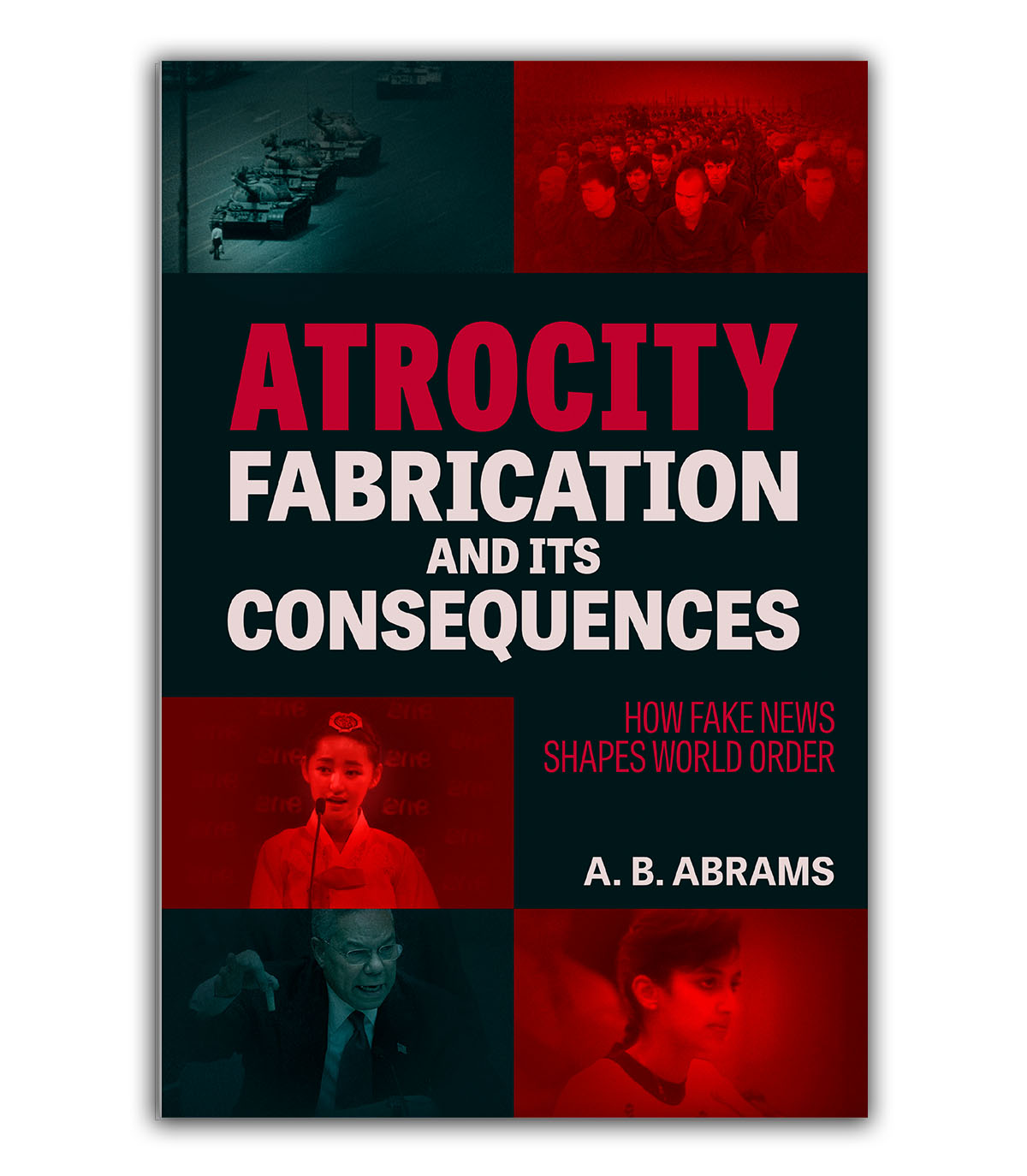
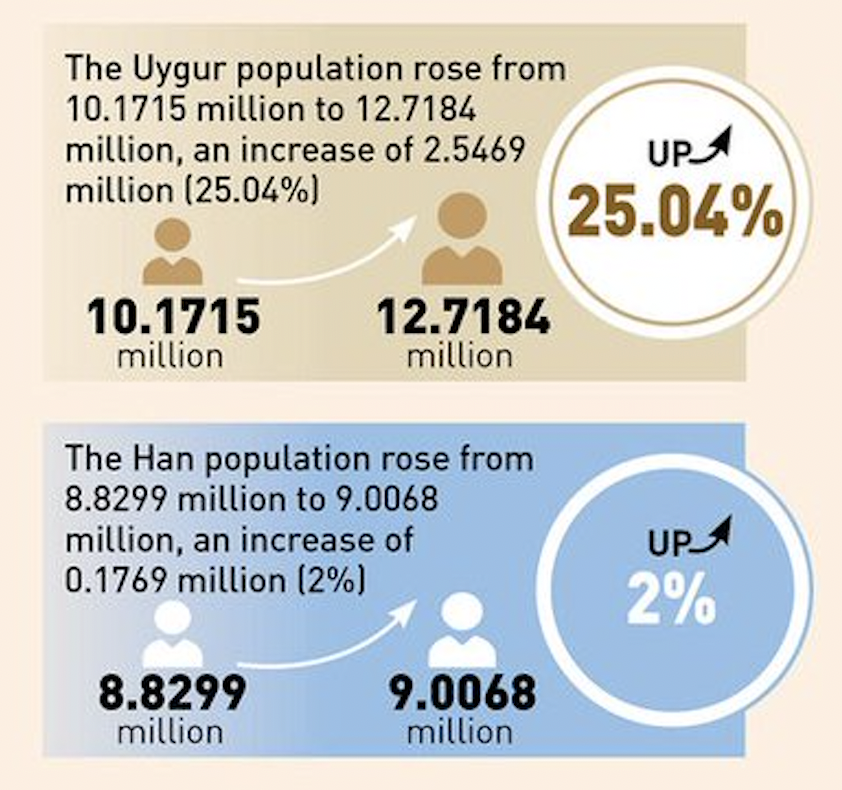
[ Scroll down to read more of the present story, or click here for a report about what really happened at Tiananmen Square in 1989 to open in a new window. ]

The real Xinjiang is no giant prison, but a place that attracts more than 10 million visitors a month. Image: Panoramio
Abrams’ superb work will be published next month [March 2023], but advance copies have been sent to the present writer and others. The book is described by top independent journalist Max Blumenthal as “a devastating exposé of the interventionist clique that has weaponized human rights in order to destabilize enemy nations and immiserate their populations”. Frighteningly, the fake stories often end up triggering violence, creating very real harm to real individuals, and causing huge amounts of undeserved reputational damage to communities perceived as enemies of the west.Abrams is a highly respected scholar, known for his superb research-led work into geopolitical relations, and his ability to see through the thick fog of media noise. In painstaking detail, with sources carefully cited, this new book tells precisely how the western world uses the media to shape global thinking by creating false narratives and weaponizing concepts such as human rights to demonize rivals.
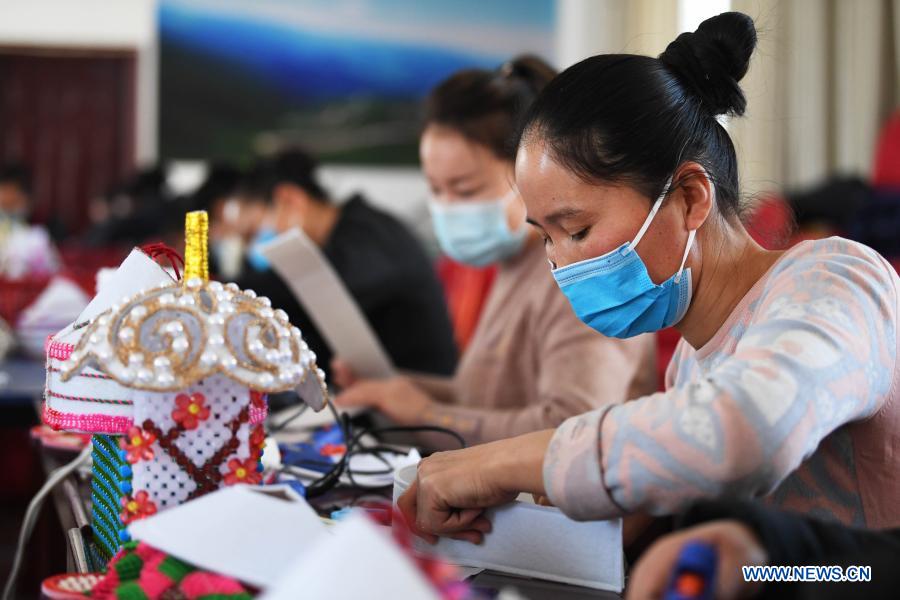
Xinjiang, a once poverty-stricken region, has seen its GDP more than double since 2010. Health ratings have climbed steeply.
How does the atrocity fabrication technique work? Hostile people in allegedly “independent” human rights groups discreetly financed by the United States government fabricate stories of grotesque atrocities which are widely circulated by the world’s biggest media, including the BBC, Reuters, and the New York Times.Abrams traces the development of the atrocity fabrication technique over centuries in multiple countries right up to the present day, but in this article, we’ll take a deeper look at just one example: his analysis of the current narrative of “concentration camps” in China.

China has raised Uyghur life expectancy to higher than that of many Western nations. Image: Unsplash
The north-western part of China is painted as the site of a horrific genocide, involving millions of people tortured or murdered in a massive network of camps. For comparison, the notoriously massive Los Angeles County Jail, which covers a land area almost twice the size of the state of Delaware, holds about 19,000 prisoners. The media asks us to believe that China has jails for three to six million people: literally the size of small countries. New Zealand has a population of about five million. But it’s abundantly clear to everyone who visits Xinjiang or just sees the constant flow of videos from that community on Chinese TikTok that there has clearly been no such event. Just like people everywhere, they post videos of themselves dancing, eating, partying, getting married, and so on. Nobody could live such normal lives if a huge number of members of their community were being tortured and murdered in concentration camps. The narrative is clearly fake. So where did the horror stories come from? “These claims relied overwhelmingly on U.S. government-funded anti-China groups dominated by hardline Uyghur dissidents with Islamist or separatist positions such as the World Uyghur Congress, the Uyghur Human Rights and Democracy Foundation and the Uyghur American Association,” the book says.“These were all heavily funded by the U.S. Congress through the National Endowment for Democracy, which had been closely affiliated with the CIA since its foundation and tasked with carrying out overtly what the agency had formerly done alone and more covertly.”
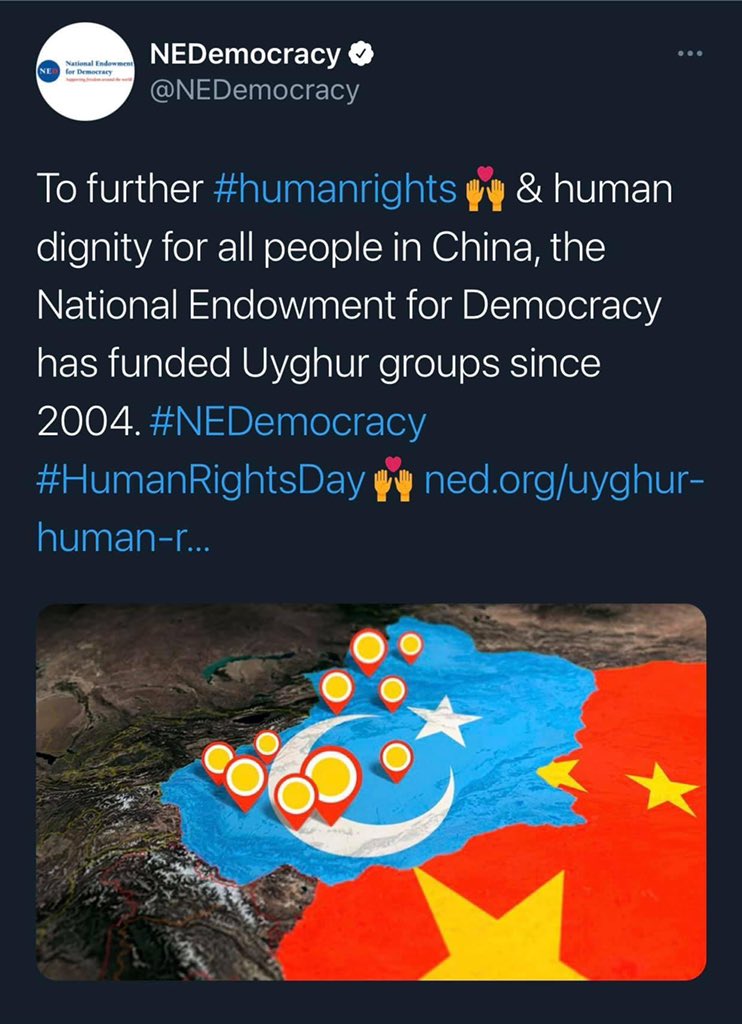
The CIA spin-off NED spends millions on anti-government groups around the world
What is really shocking is that the fabricating of atrocities often leads to harm for the innocent: the Chinese community, for example, is unfairly demonized worldwide as cruel and barbarous, while blameless Uyghurs in China have been made unemployable for no fault of their own.

Jerry Grey: retired London police officer who moved to China was not scared to speak out for his new community.
Ordinary individuals who speak out are also targeted. Jerry Grey (above), a retired London police officer, spent time in Xinjiang and wrote an honest description of life in the province, debunking Western media allegations of death camps. “This is absolute rubbish – there are not a million Uyghurs in concentration camps, that is just total baloney,” he wrote.
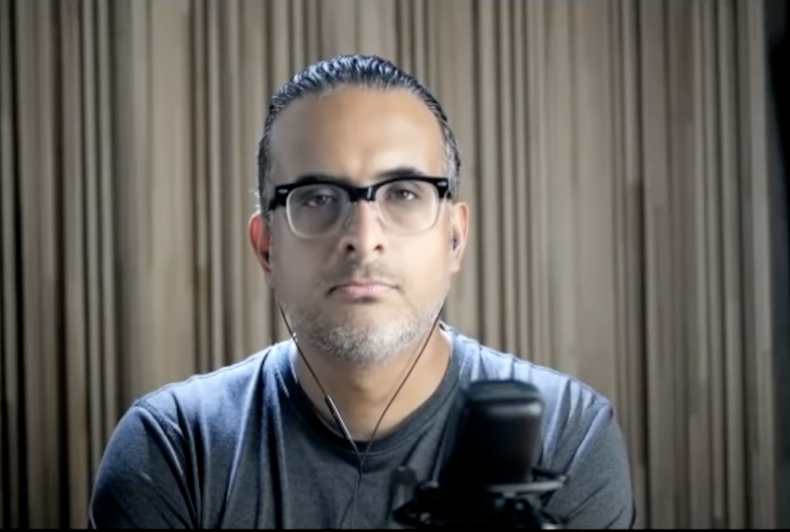
Canadian Daniel Dumbrill, outraged by the false coverage of the 2019 Hong Kong riots, has become a popular commentator.
Daniel Dumbrill (above), a brewer-turned-commentator, did something similar. “We’re expected to believe that the population of Uyghurs is being eradicated. It’s a ridiculous statement whether it is in a literal sense or even a cultural sense,” he said. They and others like them were punished harshly for telling the truth. Many western reporters attacked these individuals as paid agents of Beijing in front of audiences of millions, without a scrap of evidence. “The BBC, for one, equated such questioning of the Western narrative with ‘spreading Communist Party disinformation’ and strongly implied the need for policing to restrict such expats’ reach on YouTube and other social media platforms,” Abrams says in the book.Ironically, Grey and Dumbrill were telling the truth free of charge, while BBC journalists collected fat salaries for spreading “news reports” which consisted of fabricated atrocities.
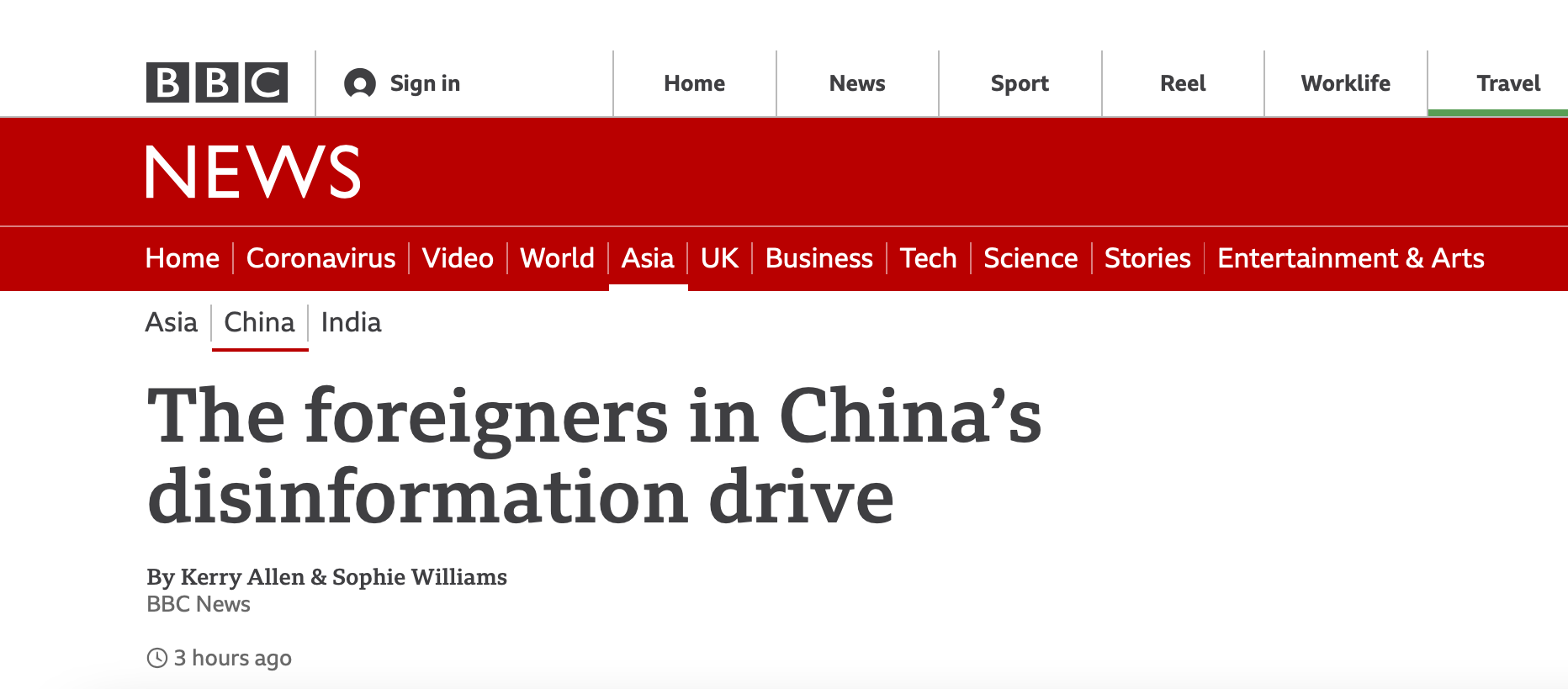
UK state-financed BBC journalists attacked ordinary people who dared to say positive things about China.
This misrepresentation of the facts was used to provide excuses to attack China on economic and other fronts. “As China emerged as an unprecedentedly potent challenger to Western power, this narrative sought to vilify and provide pretext for hostile actions against it,” Abrams writes.
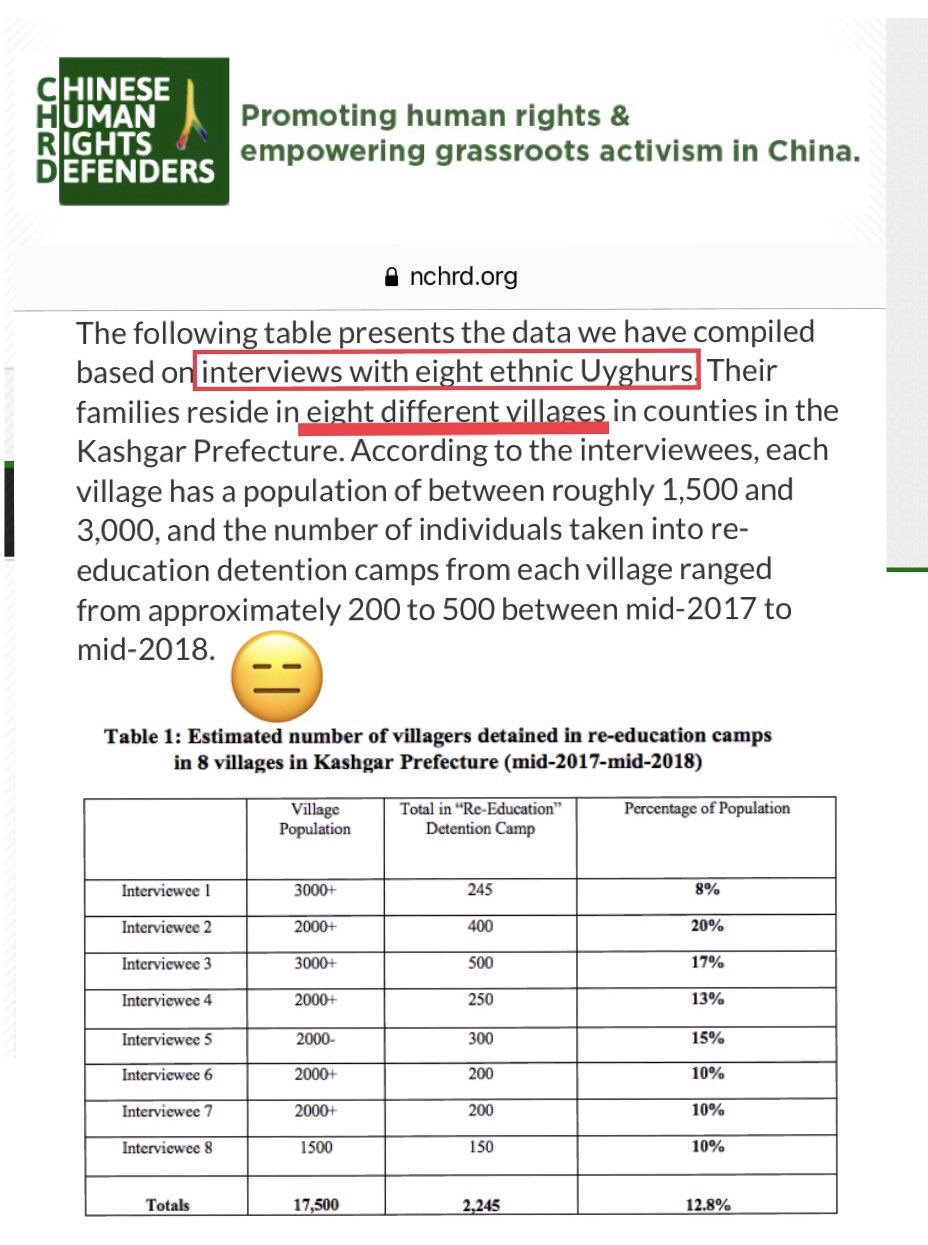
Millions jailed? CHRD interviewed eight unnamed people and extrapolated numbers.
Journalists were encouraged to print horrific reports about a massive network of Nazi-like death camps for the “genocide” of innocent victims, using stories from groups such as the Network of Chinese Human Rights Defenders. The CHRD website presents itself as a group of Chinese individuals rising up within the Chinese nation; but in reality, it is actually based in the US and “is heavily funded by the U.S. Congress through the NED, receiving approximately US$500,000 annually”, the book says. CHRD listed its address as the Washington D.C. office of Human Rights Watch, a similar group that weaponizes the concept of “human rights” to attack China.However, the BBC newsroom shockingly chose not to tell its audience about these earlier interviews, presenting only a very different horror-movie-like story that mysteriously emerged after she had travelled to the United States as a guest of a NED-funded NGO. In the new version, she was “removed from the cells ‘every night’ and raped by masked Chinese men, and that she was tortured, gang-raped and had her genitals electrocuted”. Her cell mates “disappeared”.

Many of these “torture-porn” stories presented as news reports by the BBC and CNN were so extreme that even anti-China campaigners expressed discomfort, and tried to distance themselves. “You cannot write a news story claiming systematic rape based on three eyewitness accounts, not all of whom are reliable,” wrote Gene Bunin, who runs the Xinjiang Victims Database. “You just can’t and the BBC should know better. Take that from someone who’s been dealing with testimonies 24/7 for the past two years now.”

Abrams’ book also notes the real story behind the image of a large group of men used by the Guardian and almost every other media outlet to present Uyghur concentration camp victims. But, as this writer pointed out two years ago, it really shows a 2017 group of people in a rehabilitation center gathering to listen to a Muslim speaker.

Misused picture shows people listening to a Muslim speaker at a rehabilitation center from 2017.
Yet the company was unfairly put on a blacklist of “slave labor” firms by the US Commerce Department. This made exports difficult, harming the company and its employees. “In response Esquel invited U.S. Commerce Department staff to visit the facilities in Xinjiang with free and open access but received no response,” Abrams writes. For Esquel staff, it was puzzling – it was as if their accusers didn’t want to know the truth.

Other companies, seeing cases like this, simply stop hiring Uyghurs. When companies are punished for doing the right thing, firms take fright. Western media and government are literally making Uyghurs unemployable while pretending to help them.

The media’s fake stories ended up harming businesses in Xinjiang by preventing exports.
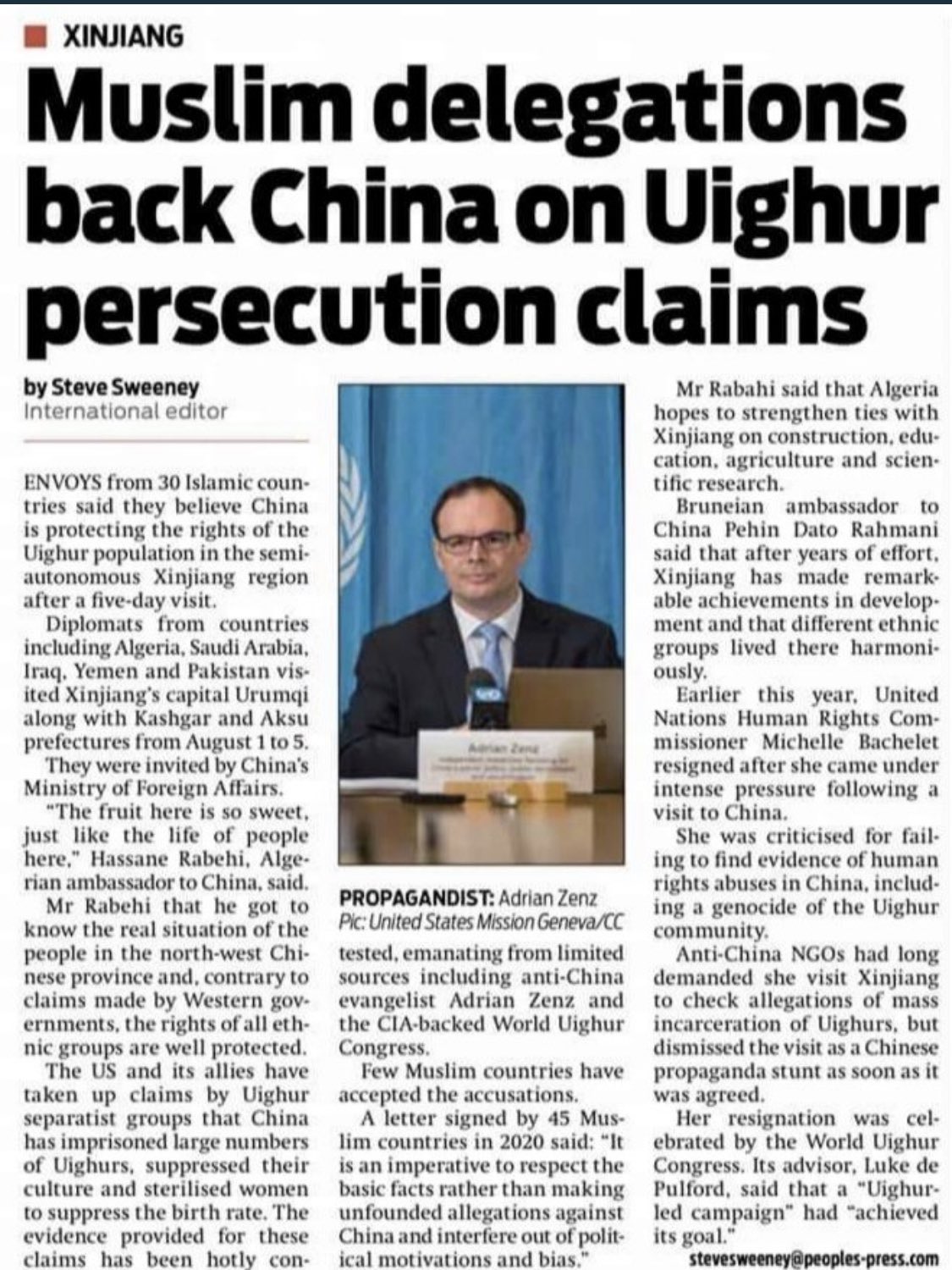
Muslims who visit tell a different story
What will be the outcome of this difficult situation? In Abrams’ opinion, it is clear that the Xinjiang genocide narrative has been swallowed by western countries, but he notes the majority of the world’s population is clearly sceptical. Numerous middle eastern and Asian countries have sent envoys to Xinjiang and come away satisfied by what they have seen. Nepalese ambassador Leela Mani Paudyal noted after her visit: “The vocational education and training centres in Xinjiang are not ‘concentration camps’ as described by some Western media, but schools to help those influenced by extreme thoughts to eliminate the harmful thoughts and learn vocational skills . . . This anti-terrorism example is worthy of learning by many countries.”In the long run, it is very clear that the atrocity fabrications of the west are harmful and divisive to everyone, whether the narratives are focused on Xinjiang, Tibet, or on other parts of the world. Western governments and media have put so much time and energy into their overblown atrocity tales that it will be difficult for them to backtrack to more moderate positions. As a result, it is inevitable that there were be a sharp drop in trust levels for western governments and media.
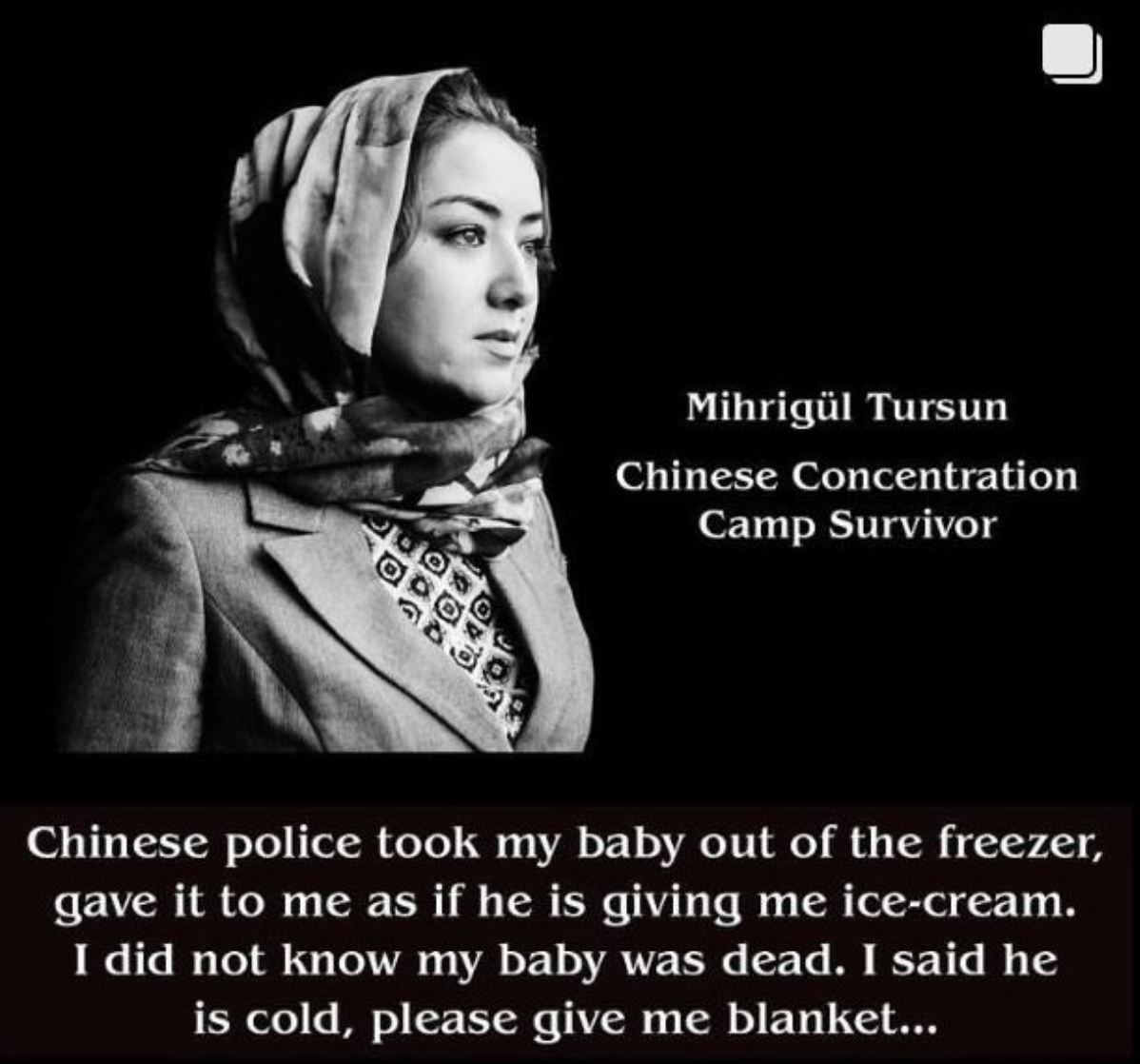
Abrams’ excellent book will be out in March. It is highly recommended.
The book can be ordered from the publisher by clicking this line.
The book can seen on Amazon US by clicking this line.
The book can be seen on Amazon UK by clicking this line.
Related posts:
NED, the US-Funded Org Interfering in Elections Across the Globe
CBT can help individuals recognise and challenge negative thought patterns that are causing them distress. — Pixabay
This is the process of identifying and changing thinking patterns that may lead to negative thoughts and beliefs.
Exposure and response prevention
This technique focuses on reducing the fear associated with thought patterns and behaviours by gradually exposing an individual to the source of their fear and preventing any reaction from occurring. Behavioural activation This technique encourages individuals to engage in enjoyable activities, even when they may find it difficult to manage their feelings. Relapse prevention This technique helps individuals understand how to maintain their positive changes and prevent a recurrence of old thoughts and behaviours that may contribute to mental health concerns. There are many different types of CBT, including: Cognitive therapy This focuses on identifying and challenging irrational and maladaptive thought patterns to improve emotional regulation. Dialectical behaviour therapy This helps individuals learn to better manage intense emotions, self-harm behaviours and interpersonal relationships. Rational emotive behaviour therapy This helps identify irrational beliefs and replaces them with more adaptive, realistic thought patterns. Acceptance and commitment therapy This helps individuals become more aware of their thoughts and feelings, and encourages them to become more psychologically flexible and accept difficult experiences. Mindfulness-based therapies These help individuals become more aware of the present moment and develop a non-judgmental attitude towards thoughts and feelings.

Prof Datuk Dr Andrew Mohanraj is a consultant psychiatrist, the Malaysian Mental Health Association president and Taylor’s University Impact Lab on Mental Health and Well-being director. For more information, email starhealth@thestar.com.my. The information provided is for educational and communication purposes only, and it should not be construed as personal medical advice. The Star does not give any warranty on accuracy, completeness, functionality, usefulness or other assurances as to the content appearing in this column. The Star disclaims all responsibility for any losses, damage to property or personal injury suffered directly or indirectly from reliance on such information.
Related stories:
Feeling stressed out? Practise self-care and have support for stressful times
Mental state of the nation and Malaysians
It's time to heal and reconcile now that GE15 is over
Power can be addictive for politicians
GE15: Feeling anxious about the elections?
Related posts: